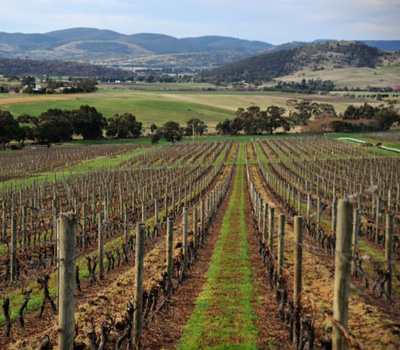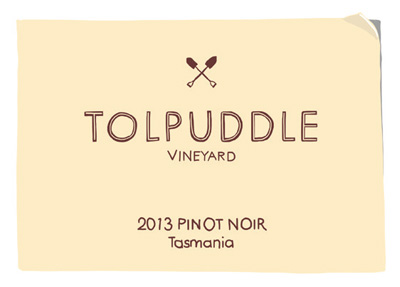In light of the Paris 2015 UN Climate Change Conference taking place from November 30 to December 11, and its goal of reaching a universal agreement on climate from all nations, we’re taking a look back at climate-focused articles from the pages of the magazine.
Potential. This is the word that the Australian wine cognoscenti invariably use when talk turns to Tasmania—that small, heavily wooded, V-shaped island just to the south of Australia’s mainland, renowned for its pristine waters and mouthwatering seafood. And wine.


Yet with warming climate patterns in mind, plus a global wine-style evolution away from heavier red wines, Tasmanian pinot noir seems set for liftoff.
Pinot has a well-established home here, thanks to its role in sparkling wine production, which has been the key viticultural driver in Tasmania for the last three decades. But in more recent times it has been smaller, often lone-hand winemakers who have drawn more keen attention to the island.
Two senior winemakers at the Australian wine juggernaut, Hardys (now Accolade), Peter Dawson and Tim James, have established the Dawson & James vineyard in the Derwent River Valley—dedicated to pinot and chardonnay. They think Tasmania will make Australia’s best pinot (and chardonnay) within the coming decade. At the greener end of the generational stick, Joe Holyman, a Taswegian (as Tasmanians are colloquially called by mainlanders) and former wine salesman and wine buyer, is producing Tamar Valley pinots at his Stoney Rise Vineyard, first established in 1986. These are darlings of the Australian pinot set. His Holyman Project X Pinot Noir is an edgy, whole bunch expression of the region’s terroir, with real nerve and verve.
The pinot that most stands out, however, is from Michael Hill-Smith, MW, and Martin Shaw, owners of Shaw & Smith winery in South Australia’s Adelaide Hills. They have recently purchased Tolpuddle Vineyard in the Coal River Valley, Australia’s driest cool-climate wine region, at about 20 inches of rain per year.
First planted to pinot noir and chardonnay in 1988, the vines have thrived. With the help of highly regarded cool-climate viticulturist Ray Guerin, the duo has put out some of the island’s most compelling pinots in the two vintages since they took over (2012 and 2013). With complex aromatics and fine-grained, minerally tannins, these are future classics from Australia.
Tasmania’s Pinot Landscape
A more precise subregional delineation of Tasmania is bringing more seriousness to its wines.
In the state’s north, near Launceston, is the Tamar Valley, which accounts for about 40 percent of the island’s wine production; this is a warmer and more moderate inland climate tempered by the Tamar River, with basalt and clay soils with good friability.


The East Coast is centered around the aptly named Wineglass Bay (20 percent). With warmer temperatures (it is known as the Sun Coast), the region is subject to erratic and sometimes heavy rain bursts; this, combined with brown, sandy clay soils makes site selection important.
To the south, near the capital, Hobart (which enjoys more sunshine hours than any other Australian state capital), lay the Coal River, Derwent and Huon Valleys, which almost account for the remaining 20 percent of wine. Although southerly, these regions are Tasmania’s warmest, with soils that allow for good drainage albeit atop often deep clay.
The more interesting percentage among all of this, however, is that 44 percent of all grapes grown are pinot—whereas, Australia-wide, pinot is but 3.3 percent of grape plantings.
This story was featured in W&S Fall 2015.
illustration by Mike Hirshon
Ben Canaider writes about wine for The Spectator Australia and is a former contributor to Melbourne’s Good Food Guide.
This story appears in the print issue of fal 2015.
Like what you read? Subscribe today.















